Alife News
The Artificial Life Community Newsletter
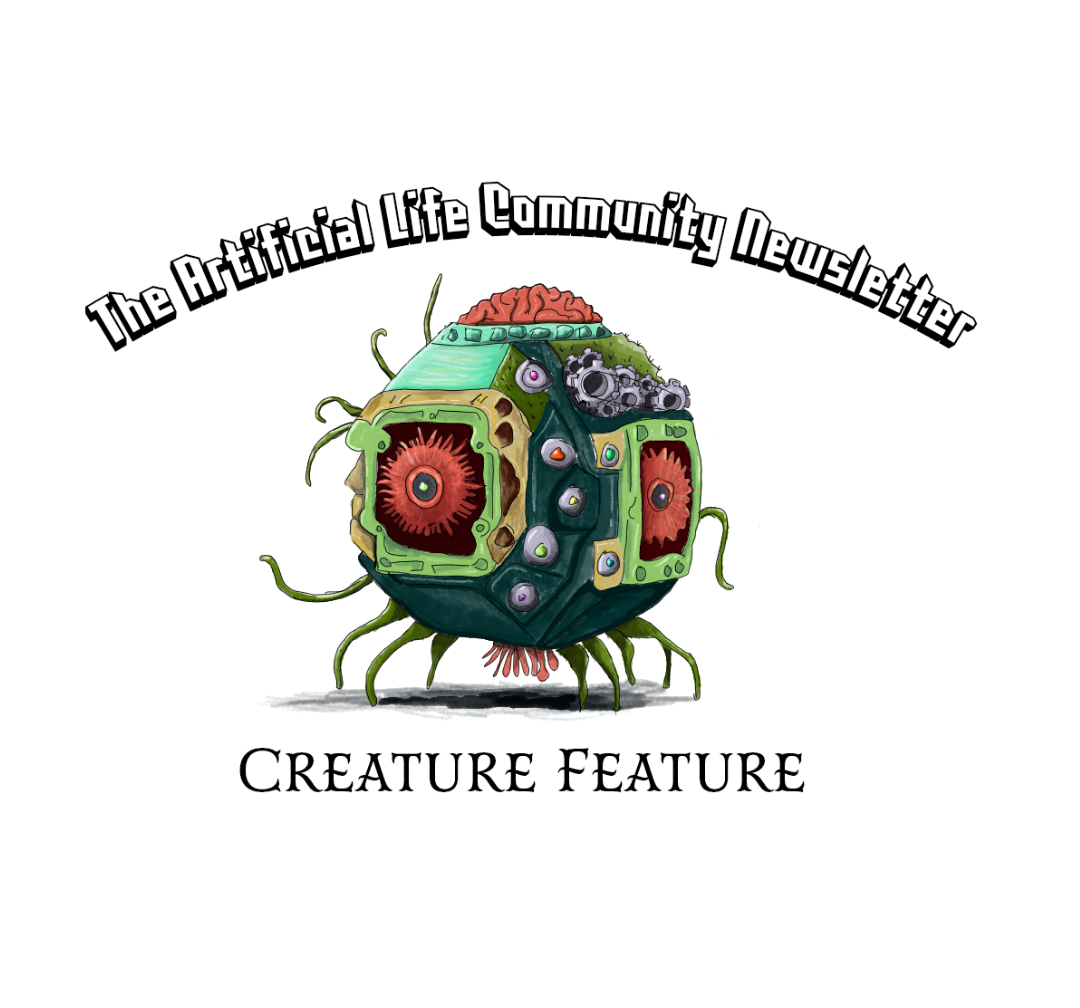
Artificial Life Newsletter 011 -- Creature Feature!
A word from the team
Welcome to the 11th issue of the Alife Newsletter!
The theme for this issue is creatures, virtual creatures, real creatures, fictional creatures. If it moves, we got it here!
Some of the amazing contributions to this edition include: a link to a paper about an interface for people to play games with algae; a web game that allows you to design a virtual creature with bones, muscle tissue and brain controls; a review of a paper laying the basic ideas of modelling life; and many other interesting tidbits! Claus and Mitsuyoshi also take you through the process of creating this very newsletter. It's not a huge commitment, so join us!
Talking about creatures, we would like to welcome Gabriel Severino, who has joined the team with an amazing contribution: the banner that you see on top of this edition!
By the way, if you are joining us in Hokkaido for ALIFE 2023 in July, don't forget to book your hotels now! July is high season in Sapporo, and the weekend of the conference coincides with one of the most famous fireworks of the area, so many of the hotels are going to be booked by tourists.
If you'd like to contribute in any way to the newsletter: talking about your project, boosting something that you like, or even just giving suggestions about what we should cover next, please leave us a message at this form! In particular, we are specially interested in Master and PhD students who want to talk about their own research ideas. Do send us a line!
If you'd like to receive our news, you can subscribe by e-mail here, or by RSS here.
Lana, Imy, Mitsuyoshi, Claus and Gabriel.
- Playing Video Games with Algae
- Crescent Loom
- Book Review: "The Mountain"
- Emerging Researchers in Artificial Life - Now on Discord!
- Paper Review - On Modeling Life by Chris Adami (1994)
- The ALife community in Scientific American
- Summary of "Survival strategies of artificial active agents"
- How is the Artificial Life Newsletter Made?
- Call for Volunteers
Playing Video Games with Algae
Shared by Lana
In this 2019 paper, Washington et al created a JavaScript web toolkit to allow real-time interaction with swarms of the algae Euglena, used as "active matter". Beginner and expert users were then able to program little video games where the human gamer interacts with the algae through joysticks or LEDs. Sadly the code seems to have gone stale since the paper was published, but have a look at the game descriptions and this video of the interface!
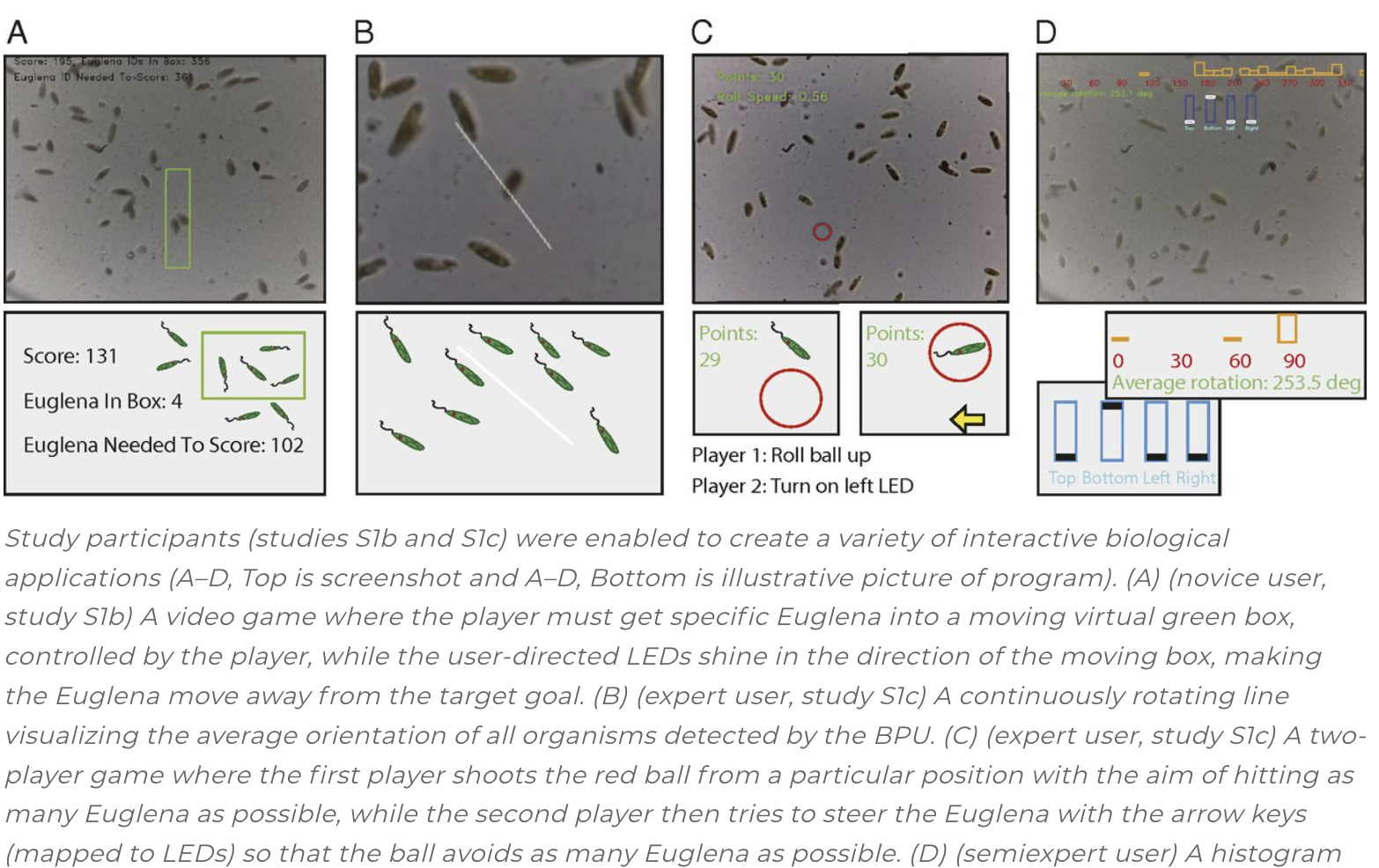
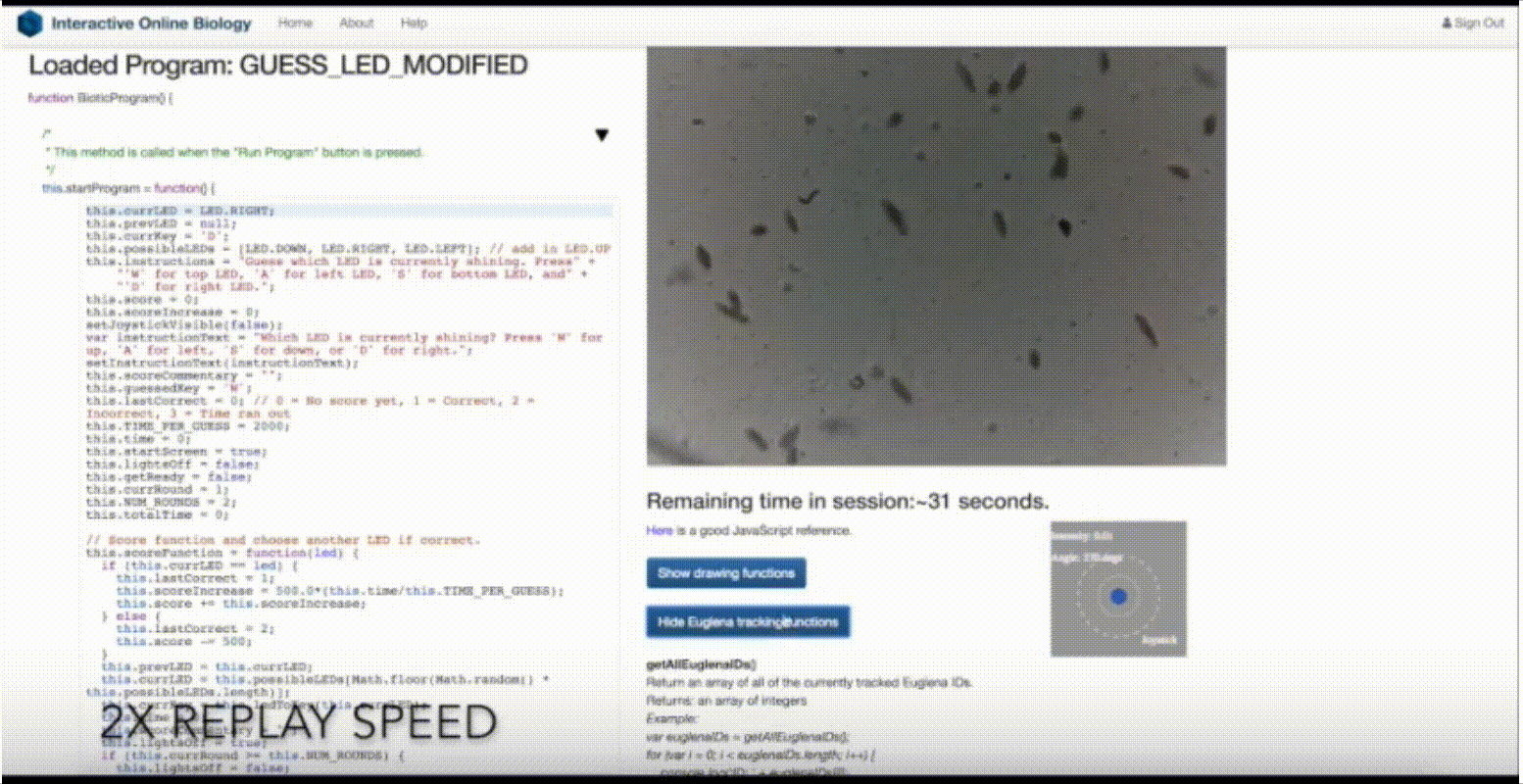
Interactive programming paradigm for real-time experimentation with remote living matter Washington, P., Samuel-Gama, K. G., Goyal, S., Ramaswami, A., & Riedel-Kruse, I. H.
Crescent Loom
By OLIVE 🌺🐍
Crescent Loom is a game about weaving new forms of life. Players build up an intuitive sense of central pattern generators by knitting bones, stitching muscles, and linking neurons to design an underwater creature in a biologically-realistic neuronbiology simulation. After using these Lego-like biological tools to make a creature, it is then put to the challenge of exploring environments, navigating past hazards, and competing against each other in races — all with constant access to view and modify their simulated nervous system in real time.
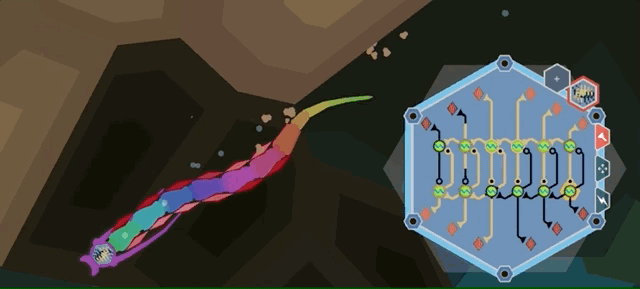
By wrapping a detailed RC-circuit model in a friendly user interface, it is designed to be the most accessible entryway into previously-gated high-level neuroscience concepts like reciprocal inhibition, postinhibitory rebound, reversal potentials, and channel-based intrinsic membrane properties. Over 5000 creatures have been made and uploaded to the public pool.
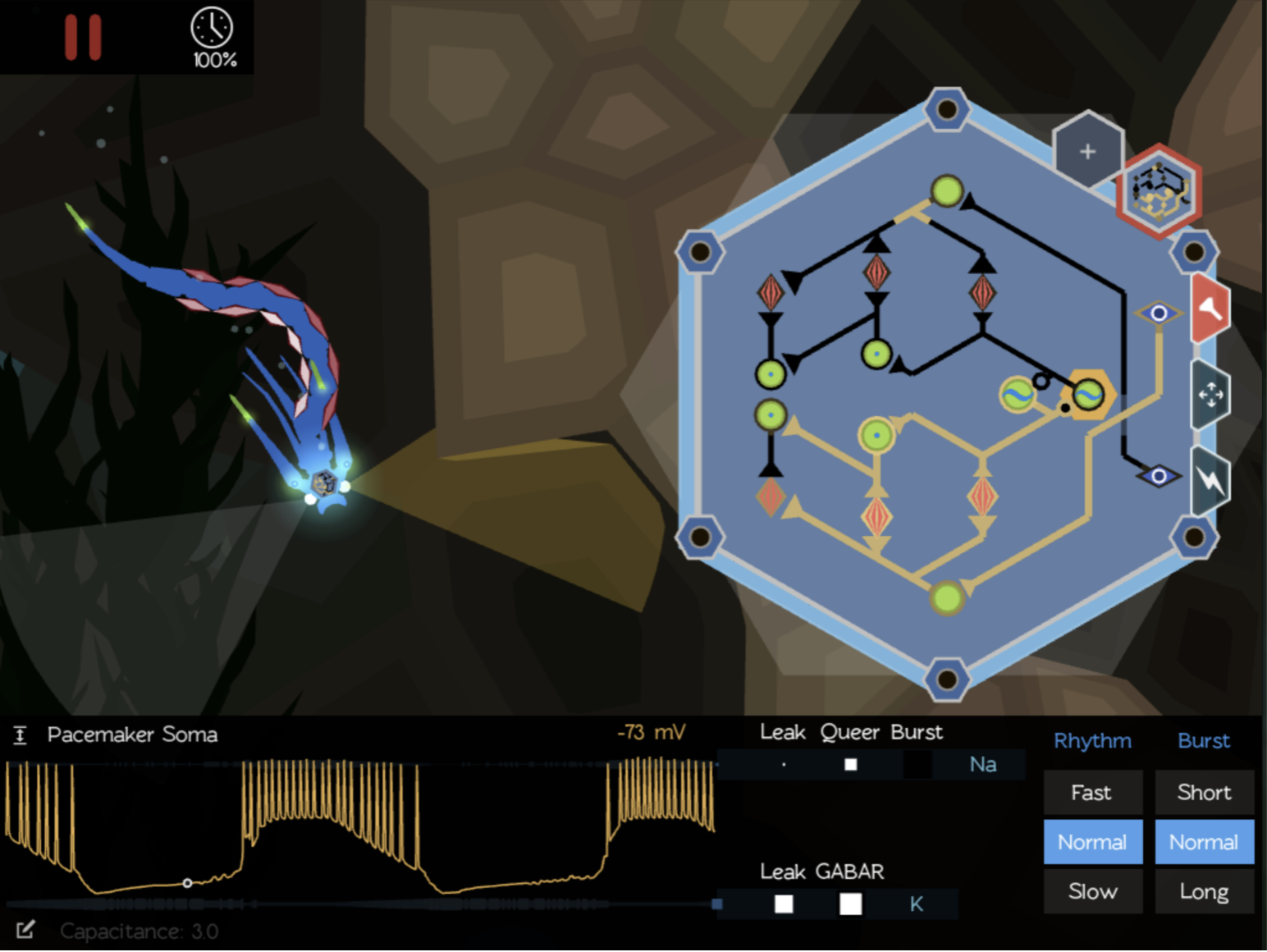
There is also a virtual wetlab "Connectome Explorer" which provides mock lab tools to puzzle out obscured connectomes of creatures created in the game's editor. Students can collect data to map unknown nervous systems using ablation, optogenetics, current clamping, and pharmacological blockers of excitation, inhibition, and action potentials.
Crescent Loom can accessed and played for free in-browser at crescentloom.com
Book Review: "The Mountain"
"Mountain" is a short story from 2012 by Liu Cixin, author of The Three-Body Problem. It is available in the Apex Magazine or in the short story collection "The Wandering Earth".
Mountain tells the story of an alien ship appearing on Earth, and the aliens describing how they developed into a space faring civilization. From an ALIFE-perspective, this story is fascinating, as it asks the question of how a civilization would develop if it started out with conditions that are very different to those faced by life on earth.
The aliens describe their species originating in a space they call the "Bubble World": A spherical space without gravity around 3,500 miles in diameter, surrounded by a solid wall of rock in all directions. Similar to human explorers throughout the ages, the aliens after a while developed a drive to discover what existed beyond the walls of their bubble world and began developing technology for tunneling through the rock wall. "Mountain" goes on to describe in fascinating detail how this alien species went on to form theories about the universe they found themselves in, allowing them to find their way out of the "Bubble world" and eventually even begin to explore other planets.
The details of the aliens' journey are best experienced in the short story. From an ALIFE perspective, I found it fascinating to see this very detailed description of how a civilization could develop technology, form theories about their surroundings and explore their universe in an environment so different from the one our civilization has developed in. For instance, the story describes the iterative development of scientific theory through generations of the aliens' lifetimes: Initially, the aliens believed their world was one of potentially several hollow bubbles in an otherwise solid universe. They called this cosmology the Solid Universe Theory. However, after thousands of years of exploring deep into the walls of their bubble, the aliens make a surprising discovery: The density of the walls decreased in all directions - indicating there may be an outer edge beyond which their universe is no longer solid. Obviously, this discovery shook the alien society, leading some (the Solid Universe purists) to dismiss it with alternative explanations, while others saw it as a beginning of a new scientific theory of their universe.
Liu Cixin has done a very impressive job carefully thinking of the details of how an alien society would work in these strange environmental conditions, and by describing these details he forces the reader to reflect on our own planet, and our own theories of physics and cosmology.
Emerging Researchers in Artificial Life - Now on Discord!
By Imy Khan on behalf of the ERA Board.
The Emerging Researchers in Artificial Life (ERA) group is transitioning over to Discord as the main platform of communications. The community is growing (again), and we would love to have you there. Since it's inception, the intention for the ERA group has been to create a space for (self-identifying) emerging (early) researchers in the ALife community to make connections, have discussions, and generally find ways to connect and have fun.
The ERA group is also running informal seminars and hang outs every few weeks on Discord, where you can also learn a little bit more about the group and its current members.
Please join the Discord using the link here. See you inside.
Paper Review - On Modeling Life by Chris Adami (1994)
Paper Link: Here Review By Imy Khan.
This month, I spent a little bit of time digging into the Artificial Life journal archives with two aims: first, to get a better understanding of the type of reesarch that the artificial life field consisted of in the early years after its inception, and secondly, to find a paper that captures (in my view) the essence of artificial life, as if to show to someone unaware of the field, "Hey, look, this is the kind of thing Artificial Life is interested in exploring."
On Modeling Life, written by Chris Adami and published in 1994 in the Artificial Life journal, is one such paper. The title itself is a bold statement, sure to catch the eye of future readers (it caught mine). The paper puts forth a model of life consisting of three minimal characteristics - self-replication of information, bit-wise mutation of information, and an environment (landscape) of information - proposing that a system consisting of these can form the foundations of a (minimally-)living system, with good universal approximation. Adami puts forth theoretical and experimental results (using Tierra and Avida) in defense of this point. Though the entire paper is worthy of a read, I was particularly enticed by this notion that Darwininan evolution may not have been a continuous process, but may have been "punctuated": where there were periods of stasis followed by large evolutionary changes (this may have common knowledge to some, but was completely new information to me!). Assuming the minimal criteria for living systems used in the model, Adami presents further experimental results to support this notion. It is statatements and experimental results like these that truly capture the beauty of ALife, in my opinion.
As a general musing, I also appreciate the conciseness of the paper: at only 10 pages including all of the images and references, it's a paper you can do a first read of fairly swiftly to get a good grasp of the main ideas. Even Karl Sims' paper in the same year was (only) 20 pages, with roughly half of the space occupied with images. In my view, at least, there seems to be more of a trend towards longer papers in recent years, but reading this paper made me feel a sense of aneomoia for much shorter, much more concrete papers.
The ALife community in Scientific American
Shared by Lana
Scientific American published an article on Artificial Life, and interviewed many familiar names about where they think the field is going. This piece was more than one year in the works, and is a good intro to our field if your relatives keep asking you "what do you work on again?" and you're struggling to provide a family-friendly answer! I don't personally agree with 100% of the opinions in the article, but I think it's really well done and I enjoyed reading it!
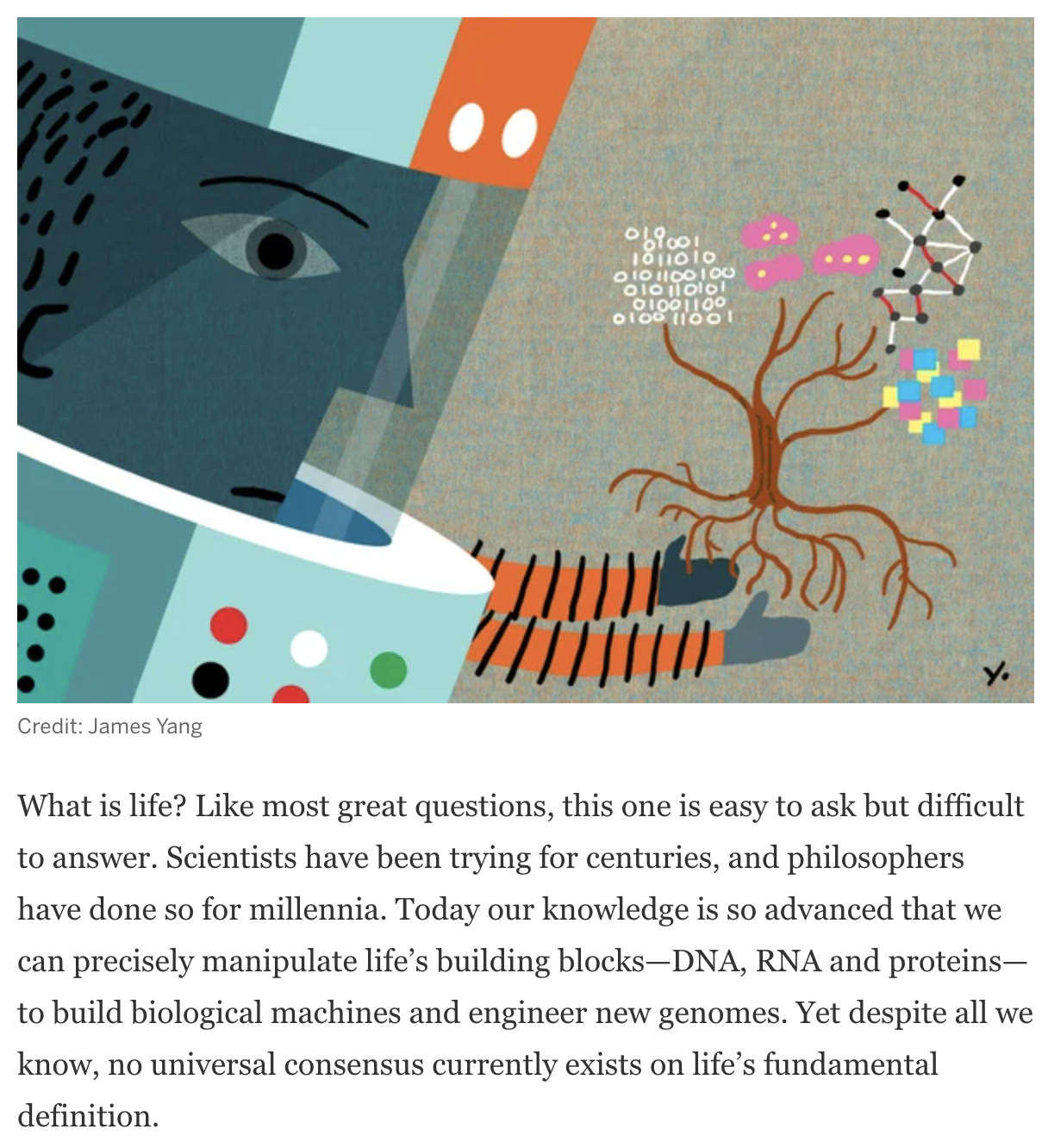
Summary of "Survival strategies of artificial active agents"
By the authors Luigi Zanovello, Richard J. G. Löffler, Michele Caraglio, Thomas Franosch, Martin M. Hanczyc & Pietro Faccioli
Active systems can respond to stimuli provided by the environment and undertake specific displacements to remain out of equilibrium, e.g. by moving towards regions with higher fuel concentration. In this work, we take a first step to characterize "survival strategies" in active systems by adapting and applying to active systems the theoretical framework of Transition Path Theory, which was originally introduced to investigate rare thermally activated transitions in passive systems.
For more details, check out the paper here
How is the Artificial Life Newsletter Made?
By Claus Aranha and Mitsuyoshi Yamazaki
Every two months, we put our heads together to bring this little slice of Alife news to you. This is the process that we use.
Our teams meets once every month (two meetings per news letter).
In the first meeting, we choose the contents of the next newsletter, and assign these to each member - usually two or three items per member. To choose the contents, we check the form with your contributions, and also a big pile of interesting things that we find on the internet.
In this stage, we make heavy use of a Trello board, with a column for the big pile, one for the different items that we choose for the newsletter, and another for done or rejected items.
Over the next month, we work on the assigned items, writing them as Markdown files. These files are kept on the Newsletter's Github repository. Every time a change is pushed to the repository, it is converted to the HTML format that you know and love using python's Markdown Package. The script concatenates the HTML from all markdown files together, and adds a static footer and header, including the newsletter CSS style.
The second meeting happens about one week before the planned date of the newsletter. We check which of the contributions were completed, which have to be scrapped, and which need just a little bit more work before release. We also fix the final release date of the Newsletter.
The day before the newsletter we give it a final check online, and after everyone gives the OK, we prepare it for release. The final HTML file is sent to everyone using MailJet, and a magic text file is added to the github repository that tells the script to update the newsletter RSS.
Looks complicated? A lot of this routine grew organically, as we learned what worked and what didn't work for each edition of the newsletter. We still have a lot of pain points to solve (the Newsletter Mail service being probably the biggest one). If you have any ideas or suggestions to improve our workflow, send us a message!
Call for Volunteers
-
The newsletter is looking for volunteers to curate content and come up with new ideas! Contact lana.sinapayen {at} gmail.com
-
The Encyclopedia of Artificial Life is live and needs contributions!